The Comprehensive Beginner's Guide to Nutrition
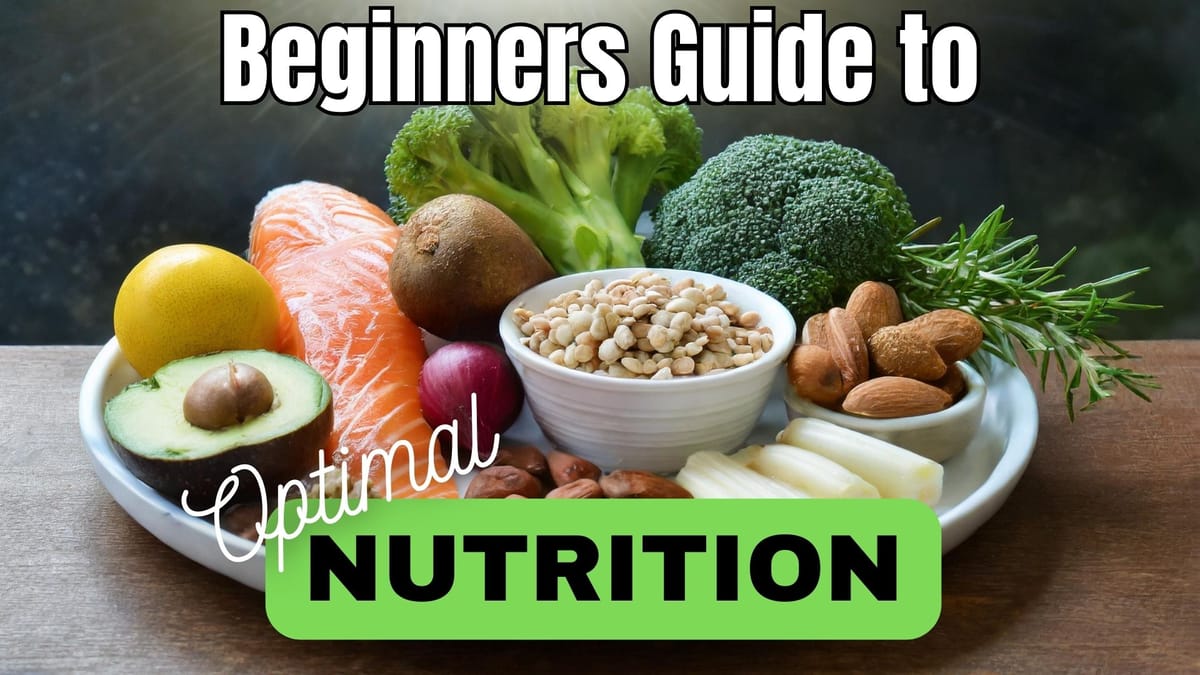
Nutrition can be a daunting topic for beginners. With so much conflicting information, it's easy to feel overwhelmed and unsure of where to start. Many people struggle to make healthy eating choices and maintain a balanced diet, leading to potential health issues and a lack of energy.
Are you tired of feeling sluggish and unhealthy? Do you find yourself constantly confused about what to eat and how to get the right nutrients? Without a solid understanding of the food groups, macronutrients, and micronutrients, it becomes challenging to follow dietary guidelines and establish a sustainable meal-planning routine.
Fear not, because this beginner's guide to nutrition education will provide you with the essential knowledge and practical tips you need to embark on a journey toward better health. We'll demystify the world of nutrition, empowering you to make informed choices and cultivate a positive relationship with food.
Purpose of the Guide
Welcome, dear readers, to our comprehensive guide on nutrition! As your trusted ally on the journey toward optimal well-being, we've curated this resource to empower you with the knowledge and tools necessary to navigate the intricate world of nutrition. Our goal is to equip you with a solid foundation, enabling you to make informed choices that nourish your body and elevate your overall health.
- Demystifying Essential Nutrients
- Understanding macronutrients (proteins, carbohydrates, fats)
- Understanding micronutrients (vitamins, minerals)
- Achieving the right balance for individual needs
- Building a Balanced Plate
- Constructing well-rounded meals
- Ideal proportions of food groups (fruits, veggies, whole grains, lean proteins, healthy fats)
- Satisfying taste buds while nourishing the body
- Meal Planning Made Simple
- Practical tips for streamlining meal prep
- Ensuring access to nutrient-dense options
- Avoiding last-minute unhealthy choices
- Decoding Food Labels
- Understanding nutrition facts and claims
- Identifying serving sizes, hidden sugars, and unhealthy fats
- Becoming a savvy shopper
- Debunking Nutrition Myths
- Tackling common myths and misconceptions
- Providing evidence-based insights
- Navigating the evolving nutrition landscape with confidence
Understanding Nutrition Basics
As we embark on our journey toward optimal health and well-being, it's essential to grasp the fundamental concepts of nutrition. By understanding what nutrition entails and its profound impact on our bodies, we can make informed choices that nourish us from the inside out.
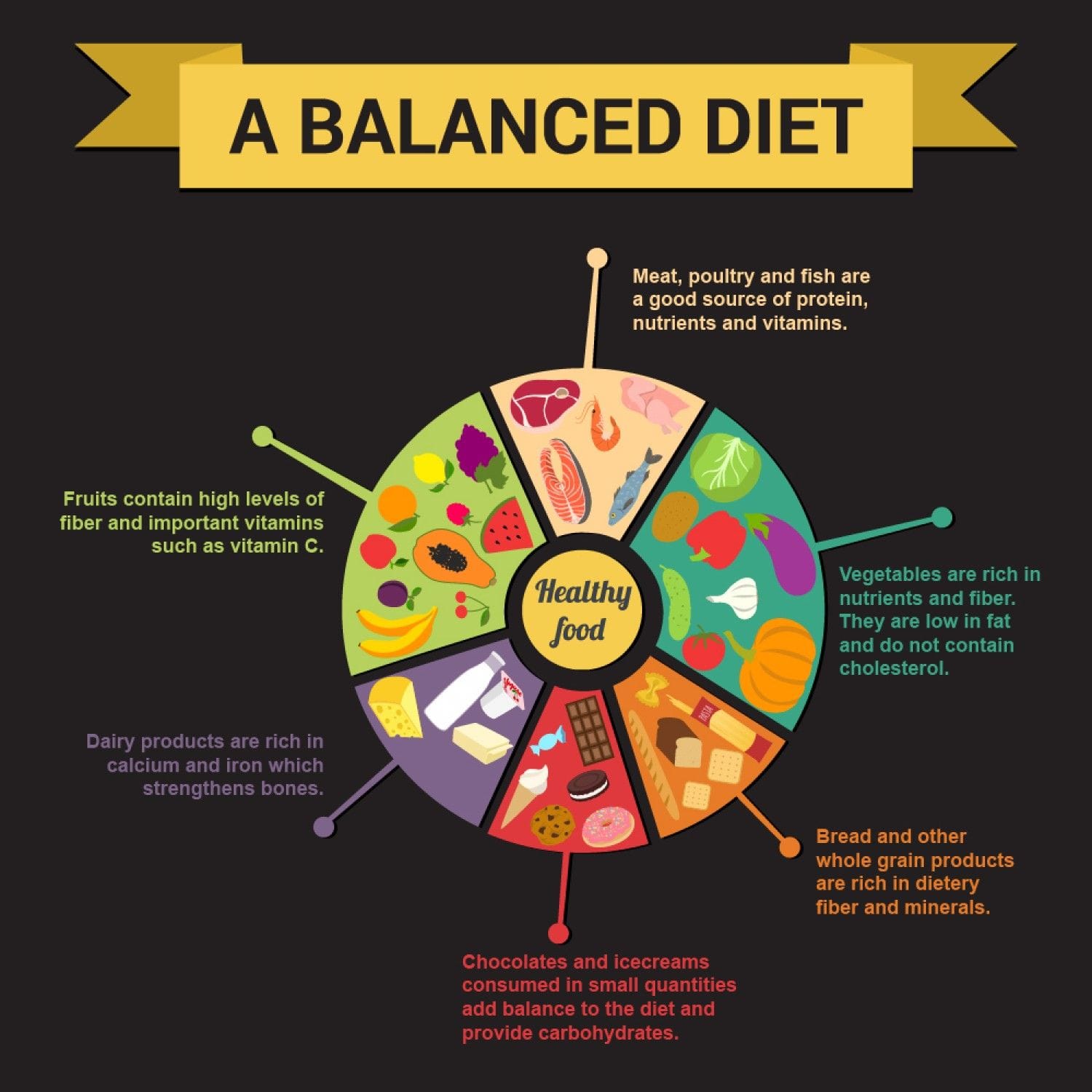
What is Nutrition?
Nutrition is an intricate science that examines how the foods we consume influence our body's growth, development, and overall well-being. It delves into the intricate relationship between the nutrients in our diet and their roles in supporting various bodily functions. Think of it as a blueprint that guides us in fueling our bodies with the right ingredients for optimal performance.
Importance of a Balanced Diet
Imagine your body as a finely tuned machine, and a balanced diet as the high-quality fuel that keeps it running smoothly. Consuming a variety of foods from different food groups in appropriate proportions is the key to obtaining all the necessary nutrients your body needs to function at its best. A well-balanced diet not only provides energy but also supports essential processes such as tissue repair, immune function, and disease prevention.
Essential Nutrients
At the heart of nutrition lie two main categories of nutrients: macronutrients and micronutrients. Let's take a closer look at each:
1. Macronutrients
These are the nutrients our bodies require in larger quantities:
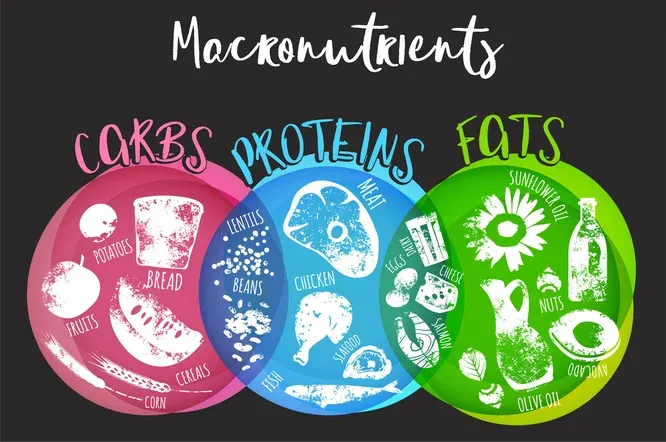
- Carbohydrates: Often referred to as the body's preferred fuel source, carbohydrates provide energy for our cells and tissues. They can be found in foods like grains, fruits, and vegetables.
- Proteins: These building blocks are essential for the growth, repair, and maintenance of our tissues. Protein-rich foods include meats, legumes, and dairy products.
- Fats: While often vilified, fats play a crucial role in providing energy, supporting cell growth, and helping our bodies absorb certain vitamins. Sources of healthy fats include oils, nuts, and fatty fish.
2. Micronutrients
While required in smaller quantities, micronutrients are no less important:
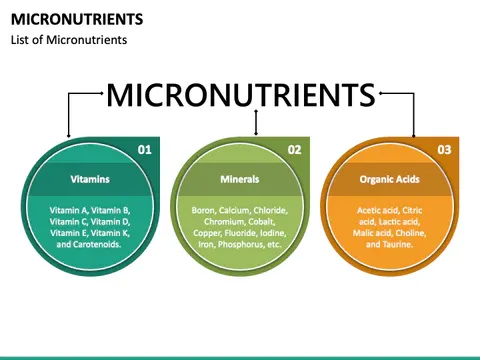
- Vitamins: These organic compounds are essential for various bodily functions, such as supporting our immune system, promoting healthy vision, and aiding in the absorption of other nutrients. Vitamins can be found in a variety of plant and animal-based foods.
- Minerals: These inorganic elements are crucial for structural and regulatory processes within our bodies. They play roles in everything from bone formation to muscle contraction. Minerals can be obtained from various food sources, including whole grains, leafy greens, and dairy products.
- Organic Acids: These compounds, such as citric acid, malic acid, and lactic acid, are produced naturally in plants and animals. They play critical roles in energy metabolism, pH regulation, and other essential bodily functions. Organic acids are found in a variety of foods, including fruits, vegetables, and fermented products like yogurt and sauerkraut.
By understanding the basics of nutrition and the essential nutrients our bodies require, we can make informed decisions that fuel us with the energy and vitality we need to thrive. Remember, a balanced and nutrient-rich diet is the foundation upon which optimal health is built.
Building a Healthy Plate
Imagine your plate as a canvas, with each food group contributing its vibrant colors and flavors to create a masterpiece of nourishment. By understanding the essential components and portions of a balanced plate, you'll unlock the secret to fueling your body with the sustenance it craves while satisfying your taste buds.
1. Food Groups and Portions
Let's dive into the key players that should grace your plate:
Fruits and Vegetables
Aim to fill half of your plate with a vibrant array of fruits and vegetables, embracing a kaleidoscope of colors and textures. These nutrient-dense powerhouses provide an abundance of vitamins, minerals, and fiber, supporting your body's overall well-being.
Grains
Whole grains should occupy approximately a quarter of your plate, offering a rich source of complex carbohydrates, fiber, and essential B vitamins. Opt for nutrient-dense options like brown rice, quinoa, or whole-wheat bread, steering clear of refined grains whenever possible.
Protein Sources
The remaining quarter of your plate should be dedicated to lean protein sources, such as lean meats, fish, eggs, legumes, or nuts. These foods provide the building blocks for tissue growth, repair, and maintenance, ensuring your body functions at its best.
Dairy or Dairy Alternatives
Don't forget to include a serving of low-fat or non-fat dairy or dairy alternatives, such as milk, yogurt, or calcium-fortified plant-based options. These foods contribute essential nutrients like calcium, which supports strong bones and teeth.
2. Portion Control: How to Build a Balanced Plate
A Portion Control Guide by Dr. Zyrowski
Embracing the MyPlate method is a simple and effective way to achieve a balanced plate. Aim to fill half your plate with fruits and vegetables, one quarter with whole grains, and the remaining quarter with lean protein sources. Don't forget to include a serving of low-fat dairy or dairy alternatives to round out your meal

Mind-Blowing Benefits of Mushrooms
3. Meal Planning and Preparation Tips
Importance of Meal Planning
Meal planning is a game-changer when it comes to maintaining a balanced diet. By taking the time to plan your meals and snacks, you'll not only save time and reduce food waste but also ensure that you have access to nutritious options throughout the week. Consistency is key, and meal planning promotes just that.
Healthy Cooking Methods
While building a balanced plate is essential, how you prepare your meals can also impact their nutritional value. Choose cooking methods that minimize added fats and preserve nutrients, such as baking, grilling, steaming, or stir-frying with minimal oil. Embrace flavors from fresh herbs and spices, rather than relying on excessive amounts of salt or unhealthy condiments.
Tips for Eating Out
In a world filled with tempting dining options, navigating the menu in a health-conscious manner can be a challenge. Fear not, dear reader, for we've curated a few tips to help you savor the flavors while remaining mindful of your nutritional goals.
Best Practices Guide For Healthy Dining Out
- Choose lean proteins like grilled, baked, or broiled fish, chicken, or lean cuts of meat. Avoid fried options or dishes cooked with heavy sauces or gravies.
- Embrace vegetables by starting your meal with a salad or vegetable-based appetizer. Request extra vegetables as a side dish or substitute them for less healthy options like fries or rice.
- Control portions by paying attention to portion sizes and consider splitting an entrée or taking home half for later. Resist the temptation to overeat, even if the food is delicious.
- Drink mindfully by sticking to water, unsweetened tea, or black coffee. If you choose alcoholic beverages, opt for low-calorie options like dry wines, light beers, or cocktails made with fresh juices and minimal added sugars.
- Ask for modifications, such as dressings and sauces on the side, substituting healthier ingredients, or requesting that dishes be prepared with less oil or butter.
- Choose whole grains like brown rice, quinoa, or whole-wheat bread, or pasta instead of refined carbohydrates when possible.
- Avoid mindless snacking on complimentary bread, chips, or other pre-meal snacks, as these can quickly add up in calories and reduce your appetite for healthier options.
- Savor your food by eating slowly and mindfully, paying attention to the flavors and textures of your meal. This can help you feel more satisfied and prevent overeating.
Meal Prep Made Easy: Tips for Success
Consistency is the key to maintaining a balanced diet, and meal prepping can be your secret weapon. Follow these tips to streamline your meal prep process and set yourself up for success:
- Plan your meals and snacks for the week in advance: Take some time to map out your meals and snacks, ensuring you have a variety of nutrient-dense options at your fingertips.
- Prepare ingredients or full meals in bulk on weekends: Dedicate a few hours on the weekend to batch-cook proteins, chop veggies, or assemble full meals that can be easily reheated throughout the week.
- Use portion-control containers for easy portioning: Invest in reusable, portion-controlled containers to help you maintain appropriate serving sizes without the hassle of measuring every time.
- Include a variety of foods from different food groups: Embrace diversity on your plate by incorporating a range of foods from each food group, ensuring you're getting a well-rounded blend of nutrients.
Understanding Labels and Making Informed Choices
In today's world, we're bombarded with countless food choices, each vying for our attention with enticing packaging and claims. However, the key to making informed decisions lies in understanding how to decipher those labels.
Reading Nutrition Labels
Take a moment to familiarize yourself with the Nutrition Facts label. Pay close attention to the serving size, ensuring you're aware of the portion you're consuming. Scan the calories and macronutrient breakdown, keeping an eye on your daily intake goals. Additionally, take note of key nutrients like sodium, fiber, and added sugars, as these can significantly impact your overall health.
Decoding Food Labels: What to Look For
Arm yourself with the knowledge to decipher food labels and uncover these hidden offenders:
- Serving size and number of servings per container: Ensure you're aware of the actual portion you're consuming.
- Calories and nutrients per serving: Keep an eye on your daily intake goals.
- Amounts of macronutrients (carbs, protein, fat): Maintain a balanced ratio that aligns with your needs.
- Sodium, fiber, and added sugars content: Excessive sodium and added sugars can have detrimental effects, while fiber is a valuable ally.
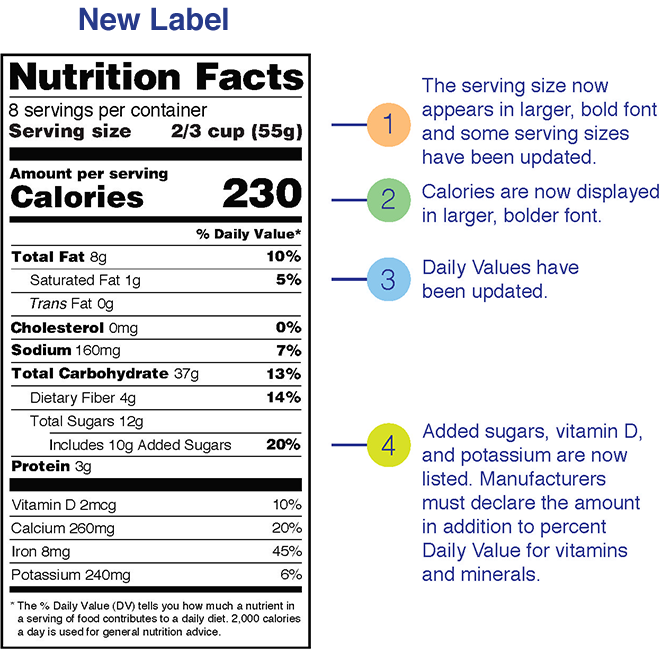
By arming yourself with these tips and tricks, you'll be well-equipped to navigate the culinary landscape, savoring every bite while nourishing your body with the nutrients it deserves.
Identifying Hidden Sugars and Fats
In the quest for optimal health, vigilance is key when navigating the world of processed foods. Behind those enticing labels and claims, hidden sugars and unhealthy fats may be lurking, ready to sabotage your efforts. But fear not, for we shall equip you with the knowledge to unmask these culprits and make informed choices.
Be wary of added sugars masquerading under various guises, such as high fructose corn syrup, molasses, honey, maple syrup, and fruit juice concentrates. These sneaky sweeteners can contribute to excess calories and potential health risks if consumed in excess.
Likewise, keep a watchful eye on saturated and trans fats, often found in processed snacks, baked goods, and fried foods. These unhealthy fats can lurk under names like partially hydrogenated oils, shortening, and palm kernel oil, silently increasing your risk of heart disease and other health concerns.
By becoming a savvy label reader and understanding the various names for added sugars and unhealthy fats, you'll empower yourself to make informed choices that truly nourish your body and support your overall well-being.
Common Nutrition Myths Debunked
In the ever-evolving landscape of nutrition, misinformation can lead us astray, clouding our judgment and hindering our pursuit of optimal health. We shall debunk some of the most persistent myths, separating fact from fiction and empowering you with evidence-based insights.

Busting Nutrition Myths: Separating Fact from Fiction
Myth: Carbs are fattening and should be avoided.
Fact: Carbohydrates have been unfairly vilified, but the truth is, that complex carbs from whole grains, fruits, and vegetables are an essential part of a balanced diet. These nutrient-dense sources provide fiber, vitamins, minerals, and sustained energy, making them invaluable allies in your pursuit of good health.
Myth: All fats are bad for you.
Fact: Not all fats are created equal. While it's true that saturated and trans fats should be limited, unsaturated fats from plant sources like nuts, seeds, avocados, and olive oil are not only beneficial but also necessary in moderation. These healthy fats support heart health, brain function, and nutrient absorption, making them a vital component of a well-rounded diet.
Myth: Dietary supplements are necessary for everyone.
Fact: While supplements can be beneficial for individuals with specific nutrient deficiencies or increased needs, they should not be viewed as a substitute for a balanced diet. A varied and nutrient-dense diet can provide the essential vitamins, minerals, and other compounds our bodies require for optimal function. Supplements should only be taken under the guidance of a healthcare professional.
Myth: Skipping meals is an effective weight-loss strategy.
Fact: Skipping meals can backfire and lead to overeating later on, as well as potential nutrient deficiencies. Instead, focus on incorporating nutrient-dense foods and practicing portion control. A consistent eating pattern with balanced meals and snacks can support a healthy metabolism and sustainable weight management.
By arming yourself with the truth and separating fact from fiction, you'll be better equipped to navigate the complex world of nutrition with confidence. Remember, a well-rounded and balanced approach is the key to nourishing your body and promoting overall well-being.
Staying Hydrated and the Role of Water in Nutrition
Amidst the myriad of nutrients that nourish our bodies, one essential element often goes overlooked – water. This humble yet vital substance plays a crucial role in our overall well-being, and maintaining proper hydration should be a top priority for anyone seeking optimal health.

The Power of Hydration: Why Water Matters
Water is truly the elixir of life, participating in numerous bodily processes that keep us functioning at our best:
- Regulates body temperature: Water helps dissipate excess heat, keeping our internal thermostat balanced.
- Aids in digestion and nutrient absorption: Adequate hydration supports the breakdown and absorption of essential nutrients from the foods we consume.
- Supports physical and cognitive performance: Proper hydration enhances our physical endurance and mental clarity, helping us power through our daily activities with ease.
- May help manage weight and appetite: Drinking water can promote a sense of fullness, potentially curbing unnecessary snacking and supporting healthy weight management.
Beyond these vital functions, water also supports the elimination of waste products and toxins, lubricates our joints, and maintains the elasticity of our skin – a true multi-tasker in the world of nutrition.
To ensure you're reaping the benefits of optimal hydration, aim to consume at least 8 cups (64 ounces) of water daily, adjusting your intake based on your activity level, climate, and individual needs. Incorporate water-rich foods like fruits and vegetables into your diet, and carry a reusable water bottle with you as a constant reminder to stay hydrated throughout the day.
Physical Activity and Nutrition
In the pursuit of optimal health, the dynamic duo of exercise and nutrition cannot be overstated. Like two sides of the same coin, they work in tandem to create a balanced and vibrant lifestyle, each complementing and amplifying the benefits of the other.
The Importance of Exercise in a Healthy Lifestyle
Regular physical activity is a cornerstone of well-being, offering a multitude of rewards that extend far beyond the physical realm. By engaging in exercise, you not only increase your energy expenditure and metabolism but also reduce the risk of chronic diseases, such as heart disease, diabetes, and certain cancers. Exercise also plays a pivotal role in weight management, burning calories, and building lean muscle mass.
Exercise and Nutrition: A Winning Combination
While exercise is undoubtedly powerful, it is nutrition that provides the fuel for your physical endeavors. A balanced diet rich in nutrient-dense foods supplies the energy and essential nutrients necessary to power your workouts and support recovery. Conversely, proper nutrition also enhances the benefits of exercise, optimizing performance and promoting overall vitality.
Together, exercise and nutrition contribute to effective weight management, striking a harmonious balance between calorie intake and expenditure. By combining regular physical activity with a mindful approach to eating, you create a synergistic effect, propelling yourself toward your health and fitness goals.
A Healthy Lifestyle: Embracing the Synergy
Truly embracing a healthy lifestyle means recognizing the inextricable link between exercise and nutrition. It's a holistic approach that transcends mere physical appearances, nurturing your body, mind, and spirit. By committing to regular physical activity and fueling your body with a balanced, nutrient-rich diet, you embark on a transformative journey towards improved energy levels, enhanced mood, and a heightened sense of overall well-being.
Seeking Professional Guidance and Resources for Further Learning
As you embark on your journey toward optimal nutrition, it's important to recognize that the path to true wellness is a continuous process of learning and growth. While this guide has provided a solid foundation, there may be times when you require personalized advice or guidance tailored to your unique needs and circumstances.
In such instances, seeking the expertise of a qualified healthcare professional or registered dietitian can be invaluable. These knowledgeable individuals possess the specialized training and experience to assess your specific situation and offer customized recommendations aligned with your goals, dietary preferences, and any existing health conditions.
Furthermore, embracing a spirit of lifelong learning can enrich your understanding of nutrition and empower you to make informed choices. Explore reputable online resources, attend educational workshops or seminars, and stay abreast of the latest research and developments in the field of nutrition.
Remember, the journey towards optimal health is a continuous exploration, and seeking professional guidance or expanding your knowledge base can provide the support and insights you need to navigate this path with confidence and success.
Conclusion
In this comprehensive guide, we've explored the foundational pillars of nutrition, arming you with the knowledge and tools to embark on a transformative journey toward optimal well-being. From understanding the role of essential nutrients to building balanced plates, meal planning, decoding food labels, and debunking common myths, you now possess a wealth of insights to navigate the intricate world of nutrition with confidence.
Remember, the path to a truly healthy lifestyle extends beyond just food – it encompasses the synergy of proper hydration and regular physical activity. By embracing these principles and making gradual, lasting changes, you can cultivate a sustainable approach to nourishing your body, mind, and spirit.
Embrace this journey with an open mind and a commitment to lifelong learning. Seek professional guidance when needed, and continuously expand your knowledge, for the pursuit of optimal health is a lifelong expedition filled with boundless opportunities for growth and self-discovery.






